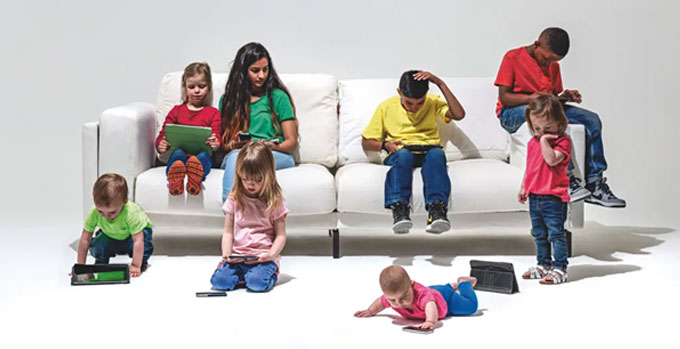Introduction
Quantum computing technology delivers fundamentally different solutions to computational problems and enables more efficient problem-solving than what is possible with classical computations. The experimental results are promising, and quantum computers could also be available commercially within a couple of years. One of the foremost famous algorithms that demonstrate the facility of quantum computers is Shor’s prime factorization algorithm. The difference between the facility of classical and quantum computing is demonstrable via the breaking speed of the Rivest–Shamir– Adleman (RSA) algorithm. Solving this computational problem requires billions of years during a traditional computational setting, while in theory, a quantum computer can solve it within a couple of hours.

From
the functional point of view, Quantum computers integrate several different
elements such elements are almost like traditional functional ones (registers,
gates, memories, buses, CPUs, storage devices), but the structures of classical
and quantum devices are fundamentally different within the physical layer. The
quantum operations are applied on quantum registers in a quantum computational
framework. In the quantum register, quantum states formulate quantum
superposition, while during a quantum circuit, the quantum states are
entangled. This causes a fundamentally different system characteristic than
what is present during a traditional computer. Besides these, quantum hardware
restrictions like the no-cloning theorem also require different circuit design
technologies since a quantum state cannot be simultaneously present in
additional than one quantum gate. It has reversible quantum gates which perform
a unitary operation on the quantum systems. Currently, we've only a couple of
quantum computer devices during a laboratory environment that works. However,
several new fields and interesting results have recently emerged which will
significantly boost these developments. The large-scale quantum computers are
realized during a distributed setting, where smaller quantum computers
communicate with each other via a quantum bus. These physically large quantum
computers also can be shrunken into small-sized devices via new technologies
within the next few years.
.
Fig.1 The conceptual diagram of the evolution
of quantum computing technology is depicted here. In the functional layer, the
aims of classical and quantum computation technology are similar, but within
the physical layer, these fields are completely different. The physical
foundations of quantum computing technologies are laid down by the DiVincenzo
criteria, which are supplemented with physical layer attributes. Quantum
computers are derived with conditions on the physical layer attributes of
quantum registers, gates, circuits, and memories.
Quantum algorithm
Shor’s prime factorization algorithm is
one of the most important quantum algorithms, and it also serves as a benchmark
to characterize quantum computation performance. The prime factorization
algorithm has been applied by different physical approaches with various
conditions on the scalability level. Quantum teleportation, quantum Fourier
transform, quantum key distribution, quantum communication protocols, and
quantum error-correction methods – which are not computational problems,
however – play a crucial role in the realization of distributed quantum
computations. Their practical implementations are essential for any future
experimental quantum computations, like the event of the quantum Internet. Some
implemented quantum algorithms practically belong to the quantum machine
learning field. Quantum programming languages are also a distinct field developed
to appropriate programming languages for the quantum computer.

Fig. 2. The conceptual model of Shor’s prime factorization algorithm. (a) The
quantum circuit of the factorization algorithm. It consists of two quantum
registers: the first quantum register A (depicted by the dashed box) contains t
qubits; the second quantum register B (dashed box) contains n qubits. First,
the superposition of the qubits of register A is ready via the H Hadamard
operation. Then, a unitary operation is applied that is required for the
period-finding method. Next, the M1 measurement operator measures the qubits of
register B. Afterward, a second unitary operation UIQFT, the inverse quantum
Fourier transformation (IQFT), is applied on quantum register A. Finally, the
qubits of A are measured by the M2 operator. (b) The state of register A after
M1 but before UIQFT. (c) The state of register A after UIQFT. Before UIQFT, the
p probabilities of the solutions (depicted by red dots) in A are low, p = r/2 t
(the non-solutions are depicted by blue dots, and b is a constant), where r is
the period. After UIQFT, the values of p are increased to p = 1/r. After the
second measurement M2, some postprocessing steps (dashed box) need to determine
r from the measurement result.
Quantum Computing Advancements
In February 2020, D-Wave Systems Inc.,
a quantum computing company, launched Leap-2, which is the first quantum cloud
service designed for developers and organizations to easily build and deploy
real-world hybrid quantum applications with practical impact. In March,
researchers at the U.S. Army lab created a quantum sensor to detect
communications over the whole frequency spectrum.
In October, IonQ announced its
next-generation quantum computing system with 32 qubits and an expected quantum
volume greater than four million. Quantum volume may be a measurement of the
general power of a quantum machine. Later within the same month, the Accredited
Standards Committee (ASC X9) issued a replacement standard for public-key
cryptography use of digital signatures.
And last, China developed a quantum
computer system called Jiuzhang which is reported to be 10 billion times faster
than Google’s Sycamore. Using Gaussian boson sampling, he had captured 76
photons and achieved quantum supremacy. Overall, the newest advancements in
quantum computing are some serious steps towards making it a billboard and
scientific reality.
While quantum computing continues to
garner billions of dollars of investment across the world, within the recent
coming years, it is going to be available as a cloud service. Not only that,
but quantum computing can become an integral part of data analytics.
As per the predictions by IDC, 25% of
Fortune 500 companies will gain a competitive advantage from quantum computing by
2023. IBM has plans to deliver a quantum computer with a 1,121-qubit processor
(codenamed Condor), inside a 10-foot tall “super-fridge” which will be online
and capable of delivering a Quantum Advantage, by 2023. The Goldeneye fridge is
currently in prototype and is meant to be capable of hosting multiple chips.
IBM hinted that such super-fridges will ultimately be capable of stacking
multiple chips providing many internally networked qubits.
The advantage of Quantum computing is
in performing certain frequent information science tasks more efficiently or
cost-effectively compared to a standard system.
Written by:










2 Comments
This comment has been removed by the author.
ReplyDeleteThis is a wonderful article. I can see that you have done a lot of research and your subject knowledge is good and impressive.
ReplyDeleteThis is Nitin, I also like to write for an education blog https://www.cleariitmedical.com/ - This is an online blog for students who want to prepare for India's most difficult entrance exams - IIT JEE and NEET This is a free blog and provide free study material, quiz and notes to those who can't afford to pay hefty fees of coaching institutes. I write free of cost for the good cause. I know you must be busy with your work but if you could take out some time from your busy schedule and have a look at it. I saw a good collection of articles. If you only write a few words about this blog then it can help a lot of students out there. Thanks!"